
(Image credit: Future)
We've been waiting a while for this: ever since Marshall announced it was entering the soundbar space, and debuted with the hugely impressive Heston 120, we've known that a smaller and more mass-appealing soundbar was on the way in the Heston 60.
As someone whose living room could never accommodate the larger Heston 120 (or Sonos Arc Ultra, for that matter), I'm instead perfectly set up to try the smaller, newer Heston 60 in place of my original Sonos Beam.
And that's just what I've done for this review: over the last fortnight I've been comparing it to both generations of Sonos Beam, to really run the rule over it. If you're going to be considered as one of the best soundbars out there, you have to do a lot right, so how has Marshall managed with its first-ever compact option?
Price and Availability
The market for compact soundbars sees prices right from the bargain basement range up to way more premium levels – and it's pretty clear that Marshall is aiming at the latter.
It has released the Heston 60 now, at a price of £499 in the UK, €599.99 in Europe, $699 in the US, and AU$999 in Australia.
That's a decent old whack of money for a soundbar without any additional hardware, and is crucially a tad more than its biggest competitor, the Sonos Beam Gen 2, which comes in at £449 / €499 / $499 / AU$699.
The gap varies per territory, but regardless it shows that Marshall isn't cutting corners (or it might be banking on a Beam Gen 3 at some point soon, bringing a price hike with it).
Design and Features
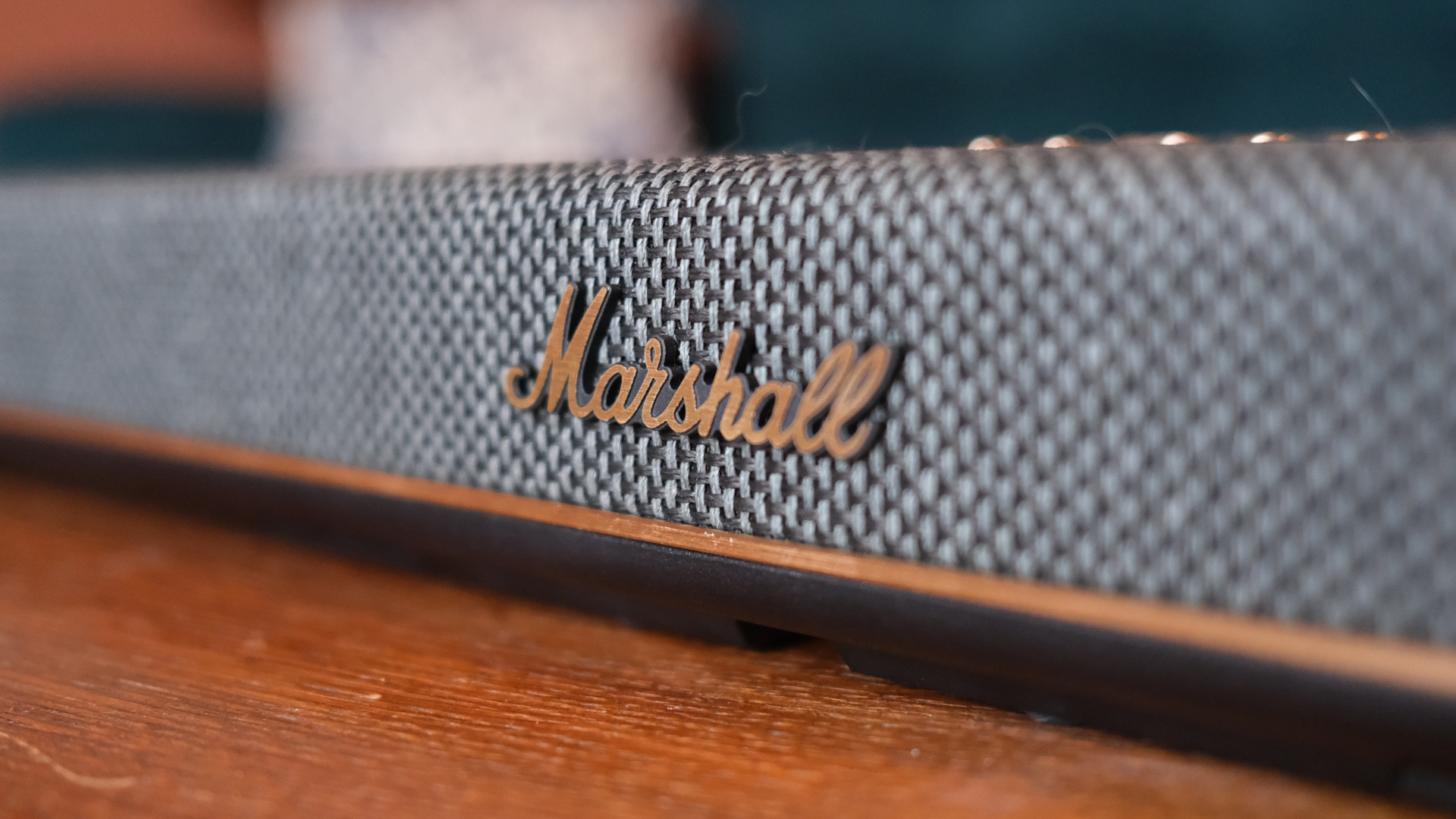
(Image credit: Future)
The Heston 60 is Marshall doing its best design work, and that means it's a significant departure from the huge army of anonymous black soundbars that have suffocated the market over the last couple of decades. If you thought Sonos dropping a white Beam was innovative, the Heston has to be something even more impressive.
Like the larger Heston 120 before it, the Heston 60 has everything you expect from a Marshall speaker, just stretched out into a compact 73cm-long soundbar form. That means you get a mesh covering over the main body of the soundbar, which hides its various drivers. This is anchored in the middle of the soundbar by a Marshall logo and the control buttons on a lovely brass-style plate.
Unlike the Heston 120, there are no knobs and dials, since Marshall apparently found that buyers at this price point valued simplicity over ornamentation. What the Heston 60 does have, though, is a pretty unique design feature for those looking to mount it on the wall.
In its normal configuration, sitting on a shelf or TV unit, the Heston 60 has its thinnest side pointing forward, and a larger expanse pointing up. However, when you mount it on the wall, you can flip this, moving it into a vertical orientation with the larger fact pointing out into the room.
To complete the look, you can remove that Marshall logo from its magnetised perch and reattach it the right way up on the other face, and flip the button-cover in the same way.
It's a really slick idea, and of course, it's way more technical than it looks, with an internal gyroscope detecting how the speaker is arranged and adjusting its sound output accordingly. Marshall says no listener will hear any difference between the two modes.

(Image credit: Future)

(Image credit: Future)

(Image credit: Future)
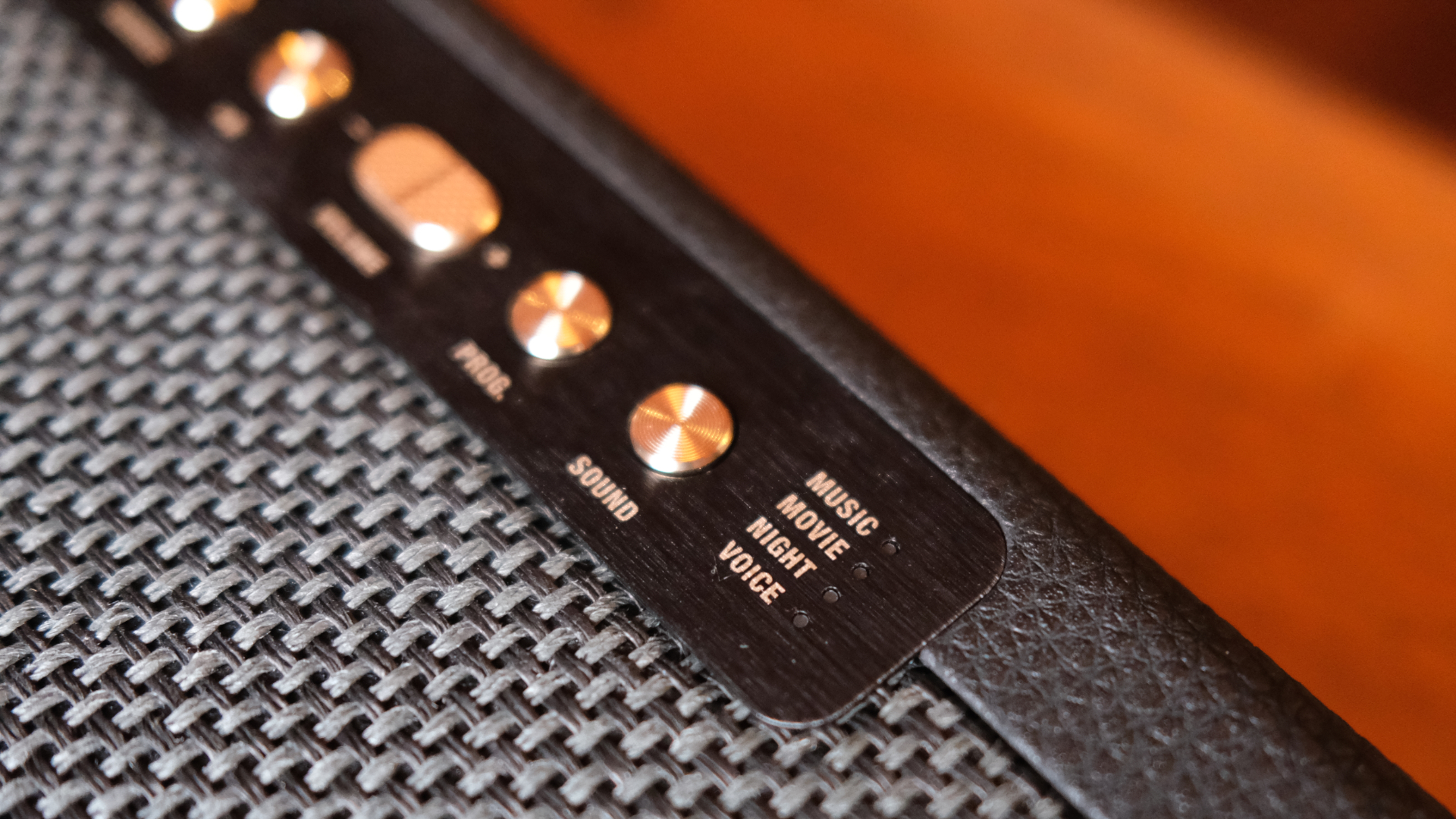
(Image credit: Future)
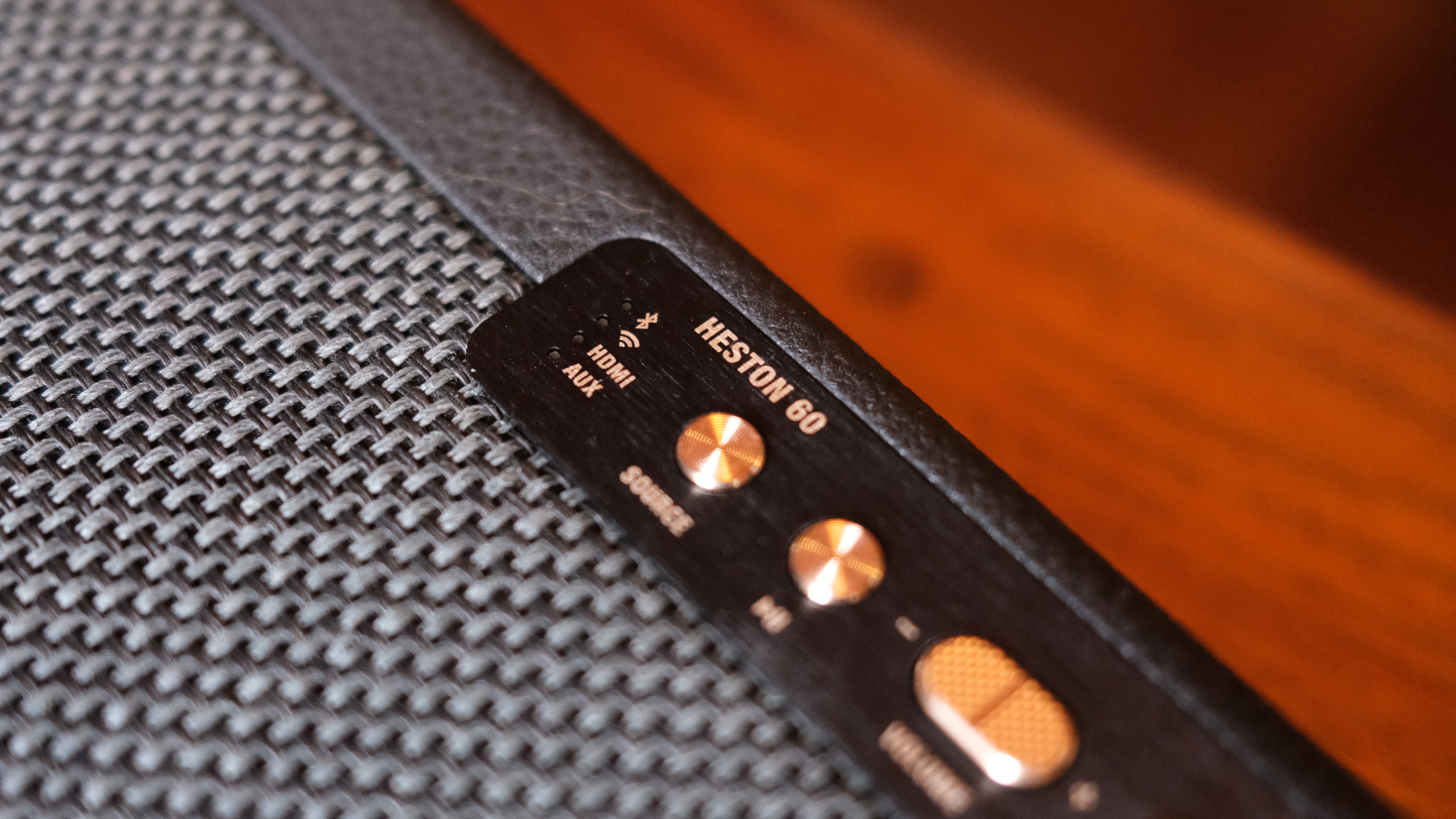
(Image credit: Future)
That button array offers you some control physically, duplicating in-app controls; you can swap between audio modes on the fly (Music Mode, Movie Mode, Night Mode, and Voice Mode), and also change inputs (Wi-Fi, HDMI, Bluetooth and Aux), play/pause your music, change the volume, and set up one button flick between pre-programmed playlist or radio options.
The back of the soundbar hides its inputs: an HDMI port for eARC/ARC connections, an AUX cable for wired audio, an RCA Mono plug (for connecting a subwoofer), and a general-purpose USB-C.
On the audio front, meanwhile, the key boast here is that despite its size, the Heston 60 is indeed a Dolby Atmos soundbar, able to decode three-dimensional audio and deliver a wider and taller soundstage. In fact, it aims to be more capable on this front than most in its weight class, thanks to a design that allows for more upfiring vertical output than many others.
The codec support on offer is very solid; you get Dolby Atmos and DTS-X for immersive audio, while the soundbar also supports the gamut of SBC, LC3, AAC, MPEG-4, ALAC, FLAC, LPCM, Ogg Vorbis, WMA, and WMA9.
For just playing your music, meanwhile, you can expect good Wi-Fi connectivity; this enables AirPlay 2, Google Cast, Spotify Connect or Tidal Connect (with Bluetooth as another option).
Sound and Performance
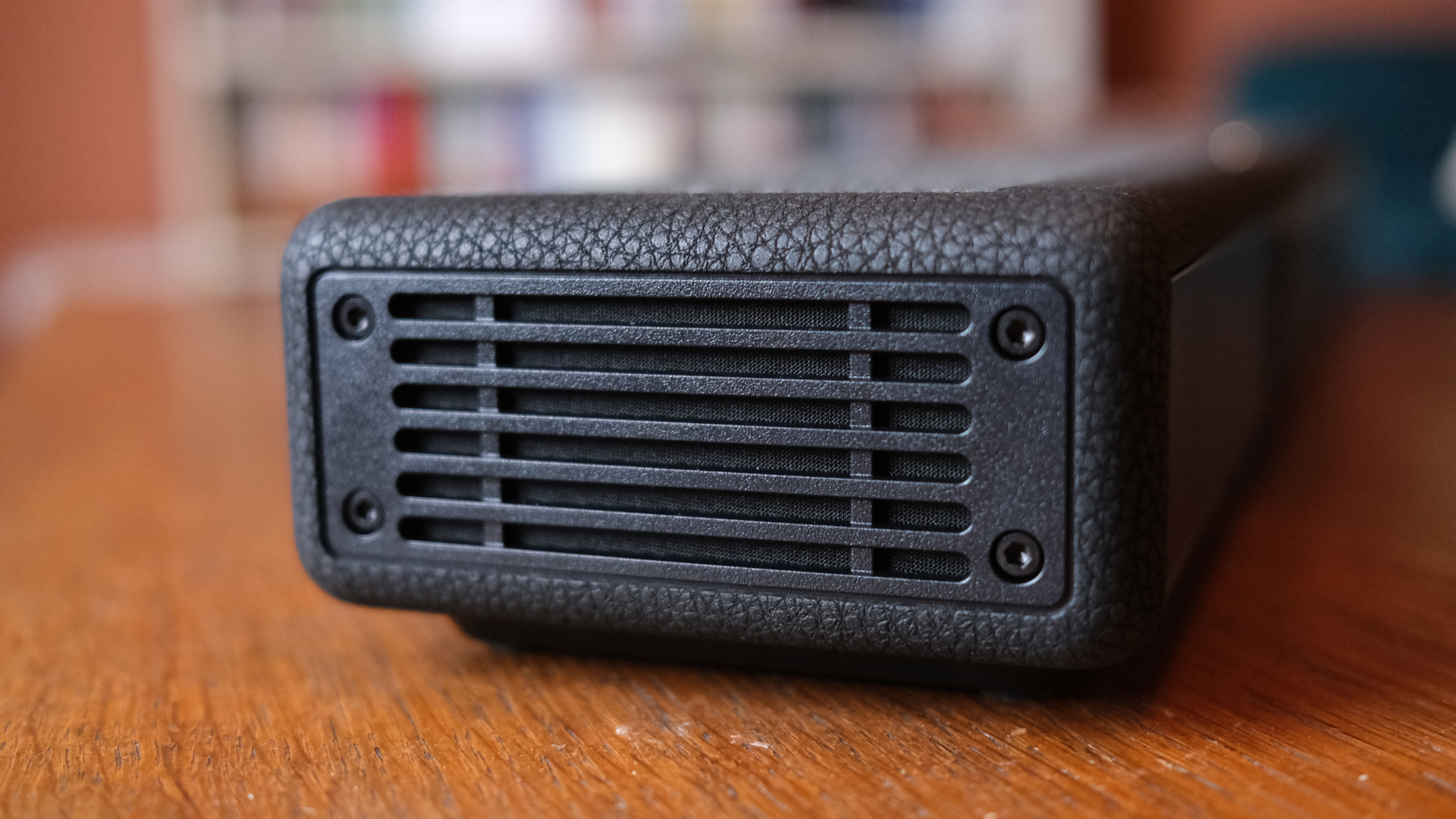
(Image credit: Future)
So, from a design perspective, I think Marshall has done a stellar job with the Heston 60, but that's really less than half the battle. After all, the reason so many soundbars look so generic is that the real focus is on sound quality above all else.
Here, Marshall scores more points in my testing – this is a really great little Atmos soundbar out of the box, with impressive richness to its audio and a decent amount of spatialisation given it's just a single unit.
I tested the Heston 60 with 4K Blu-rays, streaming content from Apple TV, and a range of music playback, and didn't really find a scenario where it lagged far behind my expectations.
Its audio can be really precise and perfect for smaller or medium-sized rooms (like mine), ensuring that you get a sense of depth and detail in your movies and shows that you might not have even realised was available.
I'm also pleased with the bass response, which is more than decent enough to make an extra subwoofer unnecessary for most people.
Marshall did send me the new Heston Sub 200 to use, however, and I did so for my second week of testing. I found it a welcome wirelessly-paired addition, but also a huge change in footprint and price – at a massive £429.99 / $599.99 extra – that simply won't make sense for most people who need a compact soundbar.
It gives terrific sub-bass and a massive bass boost, but I don't really get why you wouldn't just plump for the Heston 120 if you have enough space and cash to accommodate what is a really chunky sub.
Back to the Heston 60, though, and the promise of more verticality than the likes of the Beam can offer with its Atmos delivery is a big one. I think the Heston does deliver – but it's still virtualised (meaning the sound bouncing off your ceiling), so there's no way you're going to find it comparable to actual ceiling/surround speakers. Still, it's a marker of why the Heston 60 is that little bit more expensive.
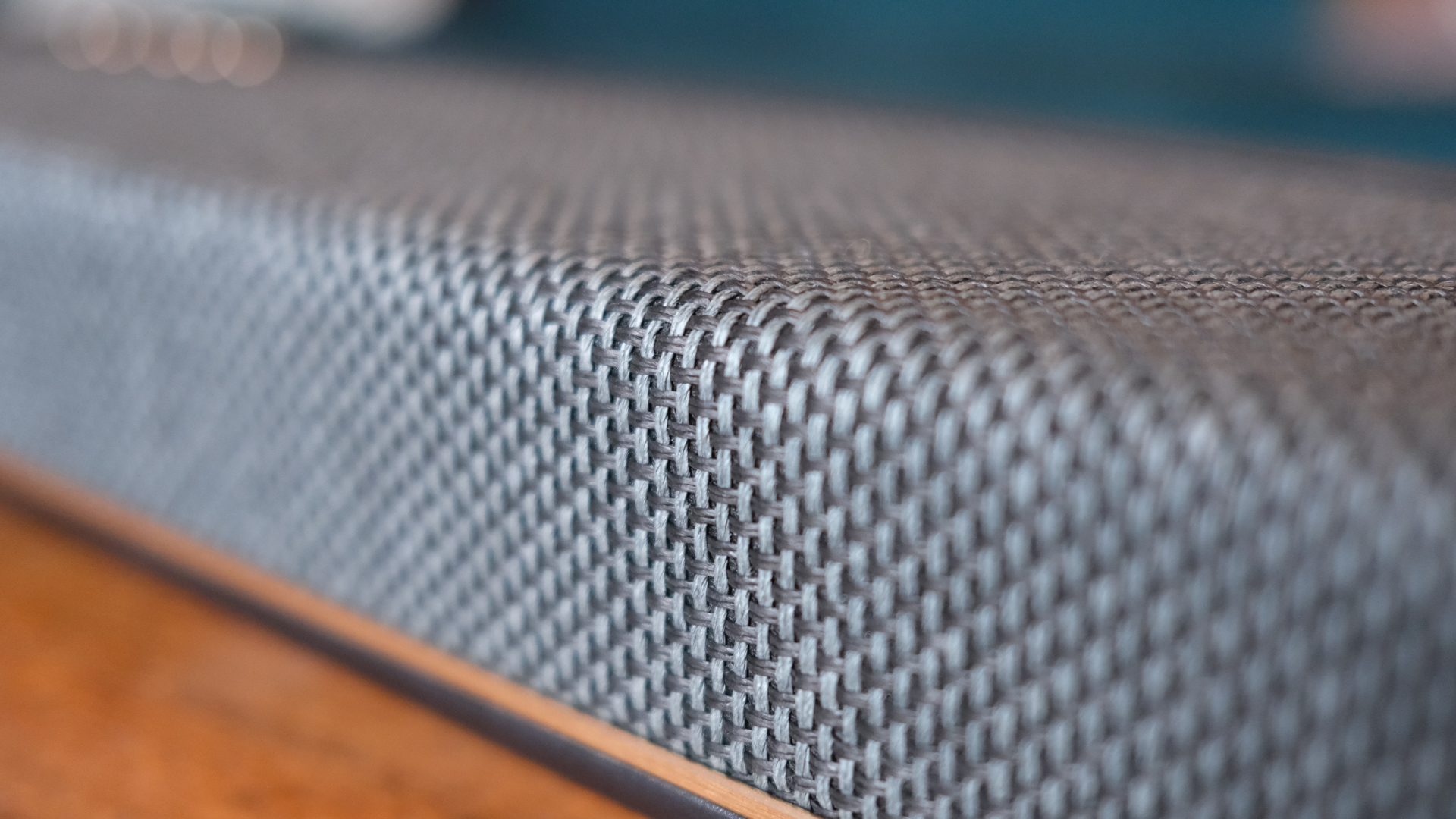
(Image credit: Future)
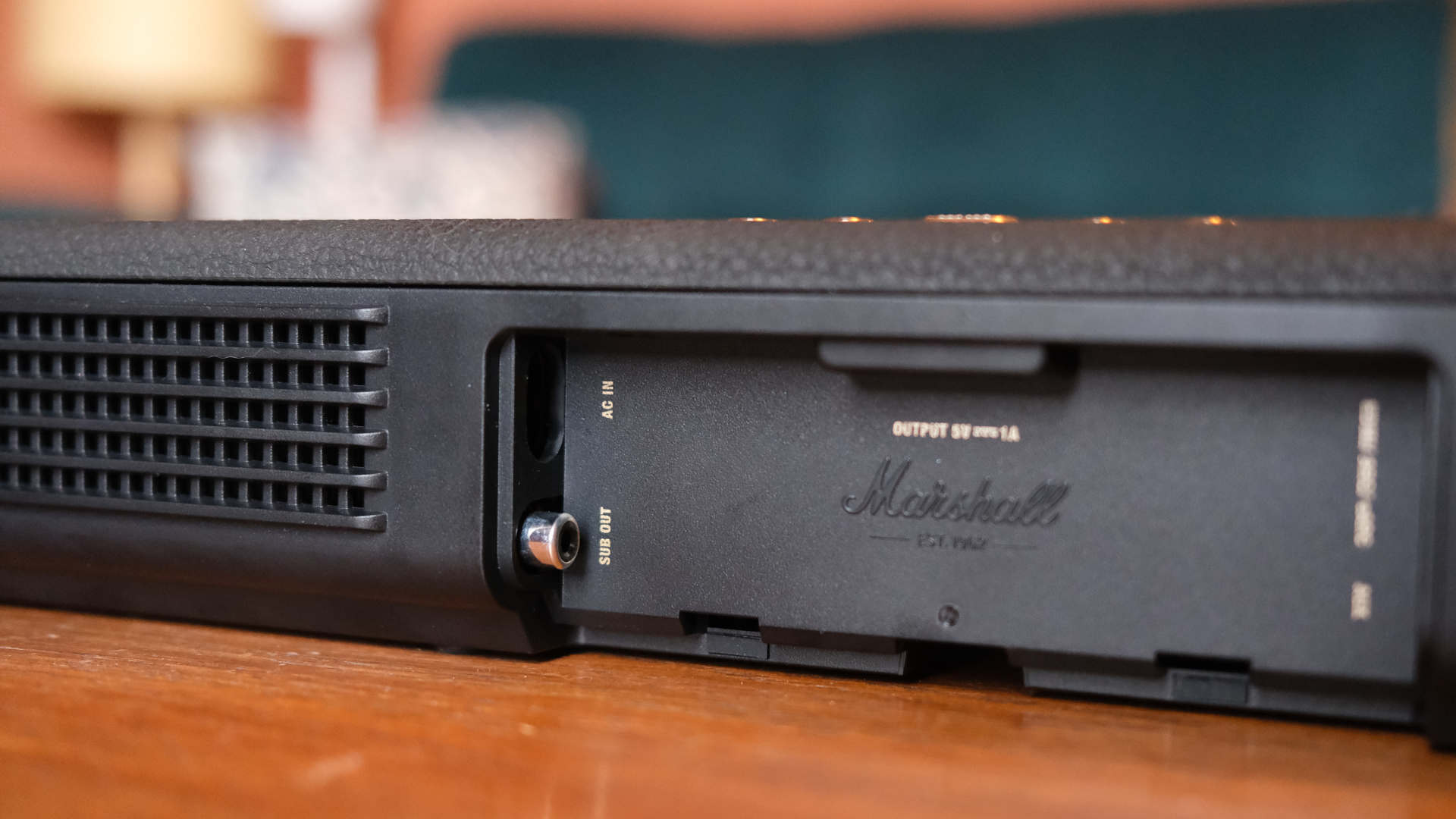
(Image credit: Future)
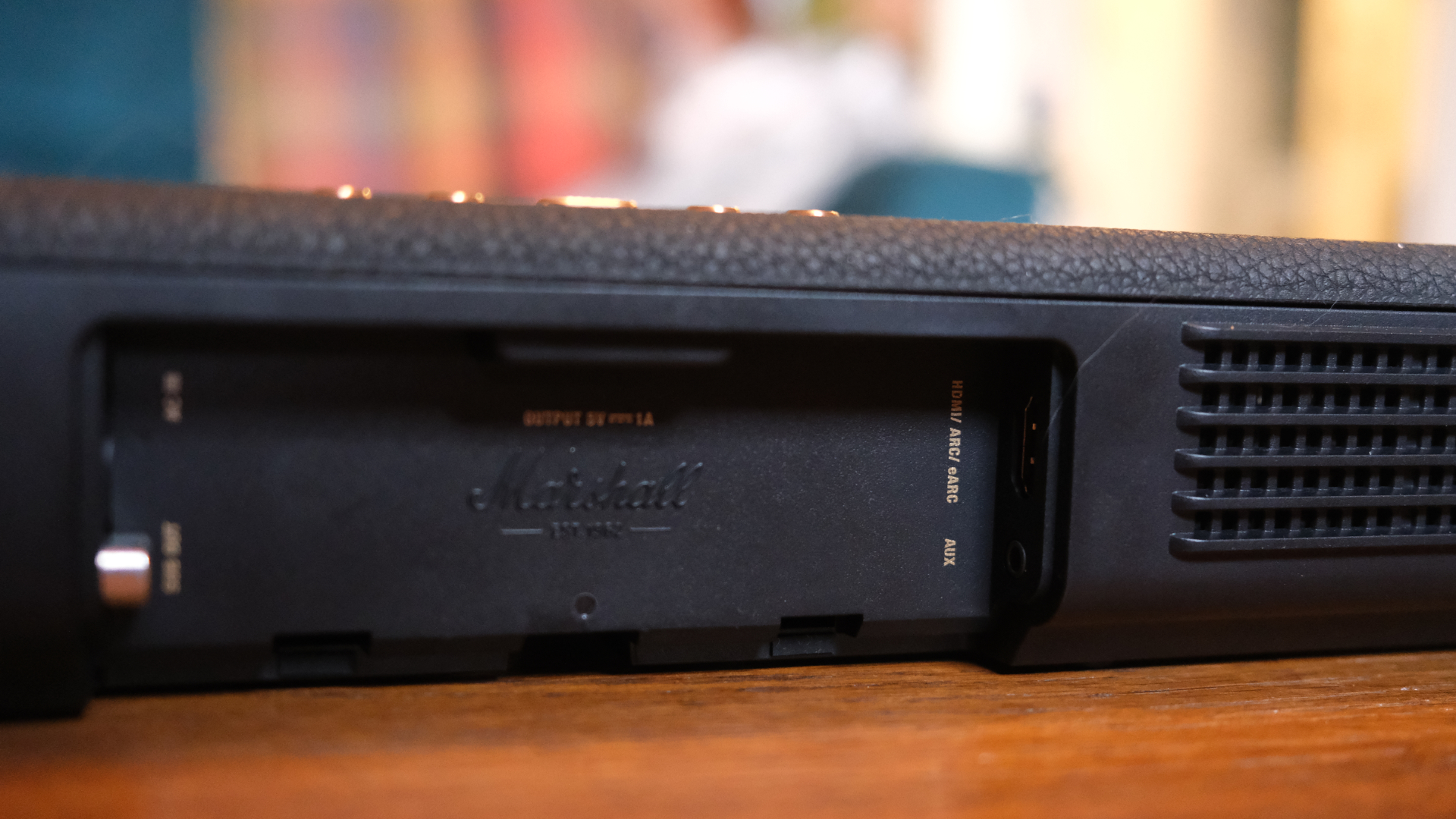
(Image credit: Future)
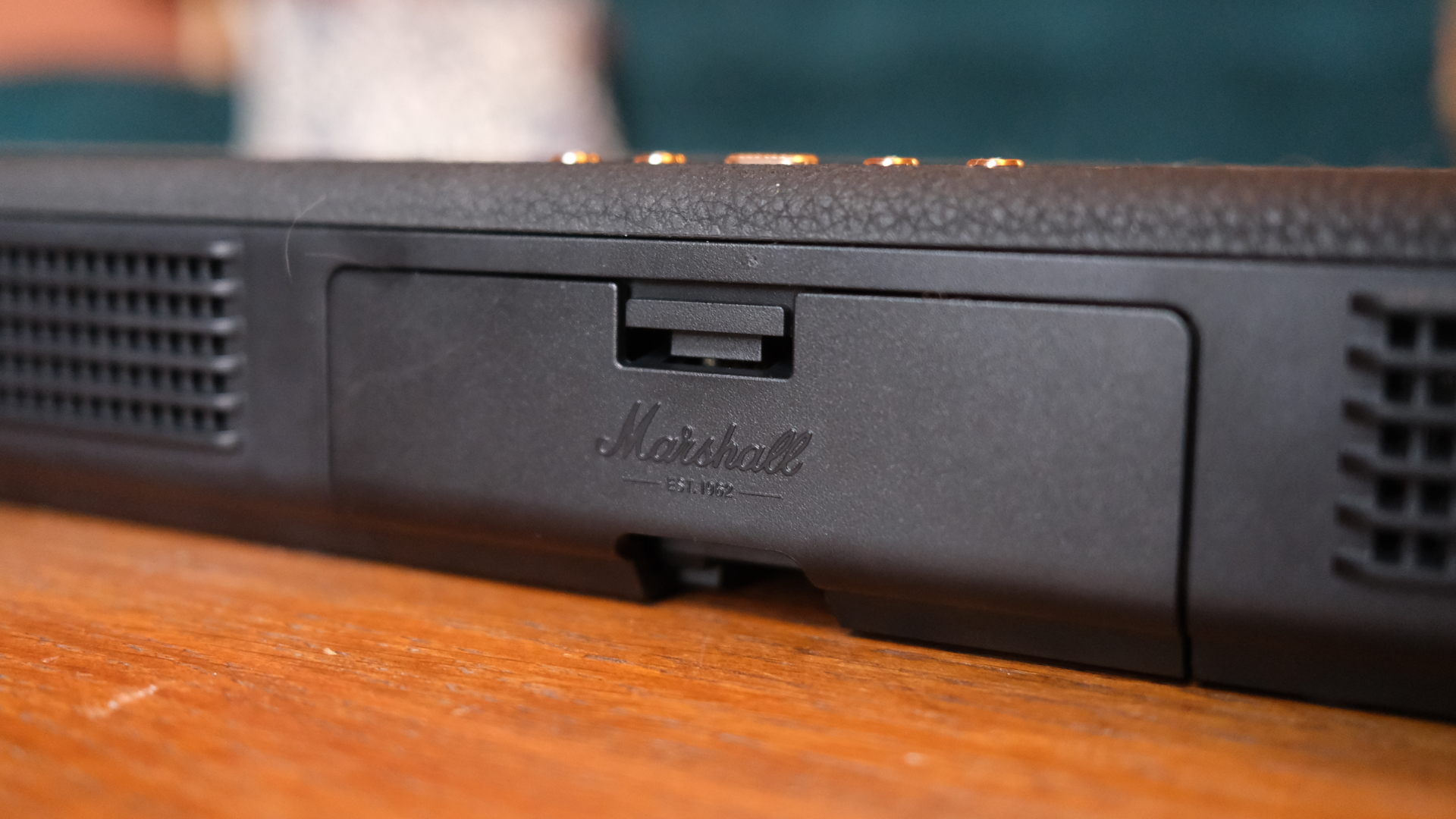
(Image credit: Future)
Where the Heston 60's performance started to lag behind what I wanted, though, was in general usability. You connect and set up the soundbar using Marshall's app, which is well organised and pretty clear – and it even has a room-tuning feature like Sonos' TruePlay, which is welcome.
However, the more I used the soundbar, the more this app shone a spotlight on some tiny irritations. Take swapping between inputs, for example; I found this always carried a delay of a couple of seconds, which sounds like nothing but grates over time (and the Sonos Beam doesn't do this). Similarly, activating the different sound modes also blanks out your TV's audio for a second, which can mean you miss dialogue in a show.
For that matter, I also found the nature of those sound modes restrictive, since only one can be active at once. This, at times, feels contradictory – if I activate Movie Mode because I'm watching a film, the fact that I can only boost dialogue by changing to Voice Mode entirely is annoying, and it's even more so that Night Mode is completely separate.
It's great that Marshall gives you a dial for each to change its intensity, unlike Sonos for its equivalents, but I'd like to be able to layer them for a setup that's exactly what I want. That said, there is equalisation (EQ) adjustment within the app, so you can create your own personalised solution.
Another issue that sits slightly outside of the Heston 60's own capabilities is that Marshall's TV sound offering isn't really fully built out yet. This means that, unlike rival brands, you can't pick up a Heston 60 and two matching Marshall surround speakers to place behind your viewing position, all at once, which really limits the soundbar's attraction in my eyes. I'd put money on Marshall having surround speakers as a feature in the works, though.
Still, that's a bit of a laundry list of minor gripes, and they shouldn't obscure the bigger headline fact – the Heston 60 sounds tremendous, and its music performance makes this clearer than it does through a TV's speakers.
Marshall Heston 60 review: Verdict

(Image credit: Future)
Marshall's compact soundbar is a brilliant-sounding bit of hardware that only needs some light software tweaks to make it as superb as I think it could be – and that's a really positive return for such a new product category in its first iteration.
The Heston 60's design is exactly as "Marshall" as fans of the brand could want, and immediately more interesting than the vast majority of the soundbar competition.
Its app is a mixed bag, though, and while it looks and sounds impressive, it's priced pretty aggressively to match that, making it far from a budget option – unless you're comparing it to the Heston 120.
As debuts go, Marshall's entry into the soundbar world continues to impress, making the Heston 60 a qualified Sonos rival with a different design flex.
Also consider
The compact soundbar market has been dominated by one big recommendation in recent years: the Sonos Beam Gen 2. It's so simple to set up and use, and sounds absolutely terrific, that it's still the best recommendation for most people.
If you want to save more money, though, the Sonos Ray is a credible option for about half the price again, getting you extremely competent sound that almost certainly upgrades your TV's own audio. It's far less fully featured, but still a solid investment.

-
 C114 Communication Network
C114 Communication Network -
 Communication Home
Communication Home


